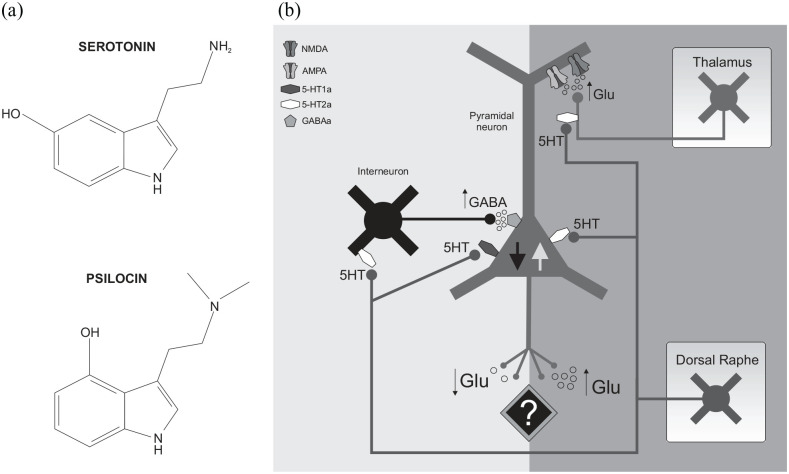Figure 2.
Effect of psilocin on receptors, cell types and PFC activity: (a) as the chemical structure of psilocin is very similar to that of serotonin (5HT), it can activate 5HT receptor subtypes and (b) psilocin may decrease pyramidal neuron (PYR) excitability (central downwards pointing black arrow) by stimulating GABA release from interneurons by 5HT2A-R activation (left) and by activating 5HT1A-R on PYR neurons. In contrast, psilocin can increase PYR activity (central upwards pointing grey arrow) by activating 5HT2A-R on PYR directly (projections arise from the dorsal raphe (DR) nucleus) and thalamo-cortical afferent terminals. This stimulates glutamate (Glu) release, which further depolarizes PYR neurons by opening their glutamatergic cation channels (AMPA and NMDA receptors).

